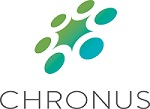ATD Blog
4 Ways Mentoring Can Empower Your Diversity and Inclusion Initiatives
Tue Aug 18 2020

During a time that seems to continually push people apart, whether due to social and physical distance or political and cultural views, human connection is more important than ever. The ongoing COVID-19 pandemic has forced many people into stressful frontline work or left them struggling to adjust to working remotely 100 percent of the time. This has created adverse effects on employees’ mental well-being and engagement, especially for women, people of color, and other underrepresented groups.
As workplaces are pushed to practice more robust forms of distancing, underrepresented employees can more acutely feel issues that might have already existed within the organization—isolation, microaggressions, a lack of support, and so on. In addition, the New York Times found, “Women have carried an outsized share of the burden, more likely to lose a job and more likely to shoulder the load of closed schools and daycare.” And this burden isn’t lessening with state reopenings; rather, it’s compounding. Women will face continued stress and anxiety as they fight to care for their children and go back to work. This is stress that could force them out of the workforce or into diminished or part-time roles. With these factors at play, equitable gains made in the workplace throughout the last decade are at risk of being rolled back.
The NeuroLeadership Institute noted “the lessons from previous crises tell us there is a very real risk that inclusion and diversity may now recede as a strategic priority for organizations.” This erosion of diversity, equity, and inclusion (DEI) initiatives endangers our modern workforce and work as we know it. Women, people of color, and other underrepresented groups of workers need more support right now, not less.
Why Diversity Still Matters
Studies have shown greater diversity in the workplace enables innovation, creativity, and employee satisfaction as well as increased revenue. A recent study from Great Place to Work looking at S&P 500 companies found those that doubled down on diversity and inclusion during and after the 2009 recession experienced a 14 percent gain, outperforming their less-inclusive peers by four times.
In addition to the bottom line, successful DEI initiatives help to increase overall employee satisfaction, engagement, and workplace belonging. During this time when human understanding and connection seem to be in short supply, mentoring can be a vital component of an impactful DEI strategy.
Benefits of Mentoring
Underrepresented employees can face challenges in the workplace when it comes to inclusion and career progression. Mentoring can provide opportunities for skill development and networking that can minimize some of these challenges as employees make their way into leadership positions or new responsibilities within an organization.
Unlike other tactics companies have used to improve diversity, mentoring is proven to make a difference. One 2016 study in the American Sociological Review found that mentoring, in comparison to other corporate tactics (such as mandatory diversity training, grievance systems or job tests), increased minority representation among managers in the workplace anywhere from nine to 24 percent.
Mentorship Programs That Can Boost DEI
When deciding which type of mentorship best suits your organization, it’s best to align with the overall objectives for DEI within your company. Once objectives are clear, various mentoring formats can aid your initiative.
Reverse Mentoring
Reverse mentoring partners older, more-experienced employees with younger, less-experienced newcomers. The younger employee serves as the mentor, providing senior members of the organization with information on the latest business technologies, candid input on the state of inclusion within departments, and fresh insight on employee experiences within the company.
Career Mentoring
This traditional one-on-one format focuses on career development and advancement as part of a robust DEI strategy. It shows organizational investment in employees early on and can illuminate their path to advancement within the organization, identifying opportunities for stretch assignments, promotion, and increased pay. It’s important to be thoughtful about how these programs are structured to ensure good representation in mentees and mentors when it comes to diversity. Otherwise, it can become another workplace program that feels exclusionary.
Buddy Program
A buddy program, where a new hire is paired with a seasoned employee to informally share knowledge, is an effective way to increase new hire retention. It is important for underrepresented employees to feel a sense of belonging and connection to the organization early on, especially if those connections are virtual. This type of mentoring program can cultivate workplace relationships and increase engagement while speeding time to productivity and getting underrepresented employees acclimated to the company’s culture.
Mentoring Circles
A mentoring circle is a peer-to-peer format that enables employees to find co-workers who have different backgrounds than themselves and share experiences as a group to gain better understanding of interactions within the organization. Many organizations enable this format through employee resource groups (ERGs) or other support groups that can gather people based on shared identities to build community and networking within those underrepresented groups. Mentoring circles are great ways to remove barriers, confront bias, and build more empathetic relationships across an organization.
Now is the time to double down on efforts to make real change in the modern workplace for a more inclusive and productive workforce.

